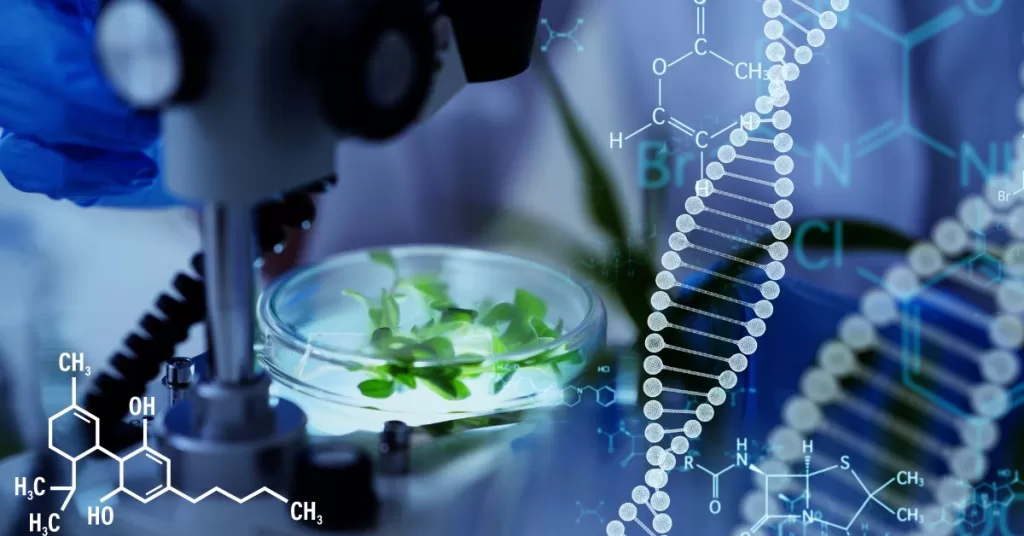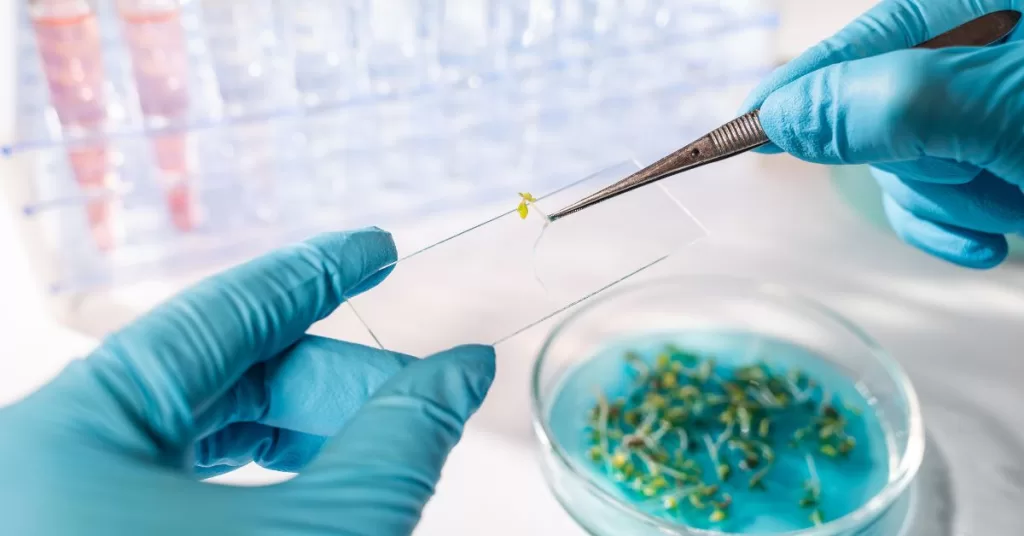It is incredible to think about how different strains with varying effects and flavors can be created by manipulating the plant’s genetics.
Cannabis genetics and breeding refer to manipulating the plant’s DNA to create new and improved strains with desired traits.
The cannabis plant has two primary species, Cannabis sativa and Cannabis indica, and several sub-species, including Cannabis ruderalis.
Each strain has a unique combination of terpenes, cannabinoids, and other compounds that determine its effects, flavor, and aroma.
Cannabis breeding involves crossbreeding different strains and selecting the offspring with desired traits. This process can take several generations to achieve the desired result.
Cannabis genetics involves manipulating the plant’s DNA to create new strains with specific traits or modifying existing strains to enhance their desirable characteristics.
Table of Contents
Importance of Cannabis Genetics and Breeding
Cannabis breeding and genetics allow producers to create new strains with desired effects, flavors, and aromas, which can cater to different consumer preferences.
It also allows producers to develop strains resistant to pests, diseases, and environmental conditions, increasing yield and quality. Moreover, cannabis genetics and breeding are essential in the medical cannabis industry.
Different strains have different therapeutic properties, and breeding can create more effective strains in treating specific conditions.
For instance, breeding can create strains with higher levels of CBD, a non-psychoactive compound known for its anti-inflammatory and pain-relieving properties.
History of Cannabis Genetics and Breeding
The history of cannabis genetics and breeding dates back thousands of years. The earliest recorded use of cannabis for medicinal and recreational purposes was in China in 2737 BC.
Ancient Chinese texts describe the use of cannabis for various ailments, including pain, inflammation, and anxiety.
Cannabis genetics and breeding in modern times began in the 1960s and 1970s when cannabis enthusiasts started crossbreeding different strains to create new and unique strains.
The first hybrid strain, Skunk #1, was created in the 1970s, and it quickly became popular due to its high THC content and unique aroma.
Since then, cannabis genetics and breeding have come a long way, with new techniques and technologies being developed to enhance the process.
Innovations in Cannabis Genetics and Breeding

In recent years, several innovations have been developed to improve cannabis genetics and breeding. One of the most significant innovations is the use of tissue culture.
Tissue culture involves growing cannabis cells in a controlled environment, which allows for the production of genetically identical plants. This technique helps produce large quantities of plants with desirable traits.
Another innovation is the use of genetic markers. Genetic markers are specific regions of DNA that can be used to identify desirable traits in cannabis plants. This technique allows breeders to identify and select plants with desirable traits for further breeding.
Moreover, new technologies such as CRISPR/Cas9 have made genetic modification of cannabis plants possible. This technique involves editing the plant’s DNA to create specific traits, such as higher THC or CBD content.
Advancements in Cannabis Breeding Techniques
Advancements in breeding techniques have made it easier and faster to create new and improved cannabis strains.
One of the most significant advancements is the use of feminized seeds. Feminized seeds have been genetically modified to produce only female plants. This technique helps eliminate the risk of male plants, which can reduce yield and potency.
Another advancement is the use of crossbreeding techniques such as backcrossing and hybridization.
Backcrossing involves crossing a hybrid strain with one of its parents to create a strain with more desirable parent traits.
Hybridization involves crossing two different strains to create a new hybrid strain with desirable traits from both parents.
Genetic Modification of Cannabis Plants

Genetic modification of cannabis plants involves using genetic engineering tools to create specific traits in the plant.
This technique can create strains with higher potency, better flavor, and improved therapeutic properties.
However, genetic modification of cannabis plants is a controversial topic, with many concerns about the safety and ethical implications of the process.
Some argue that genetically modified cannabis plants could have unintended consequences, such as increased toxicity or reduced biodiversity.
Key Players in Cannabis Genetics and Breeding
Several key players in the cannabis industry are involved in cannabis genetics and breeding.
These include breeders, geneticists, and biotech firms. Some of the most prominent names in the industry include DNA Genetics, Green House Seed Company, and Sensi Seeds.
These companies have significantly contributed to the cannabis industry by developing new and improved strains.
They have also played a role in advancing the science of cannabis genetics and breeding.
Challenges Faced in Cannabis Genetics and Breeding
Cannabis genetics and breeding face several challenges. One of the most significant challenges is the legal status of cannabis in many countries. This limits the research and development of new strains and techniques.
Another challenge is the lack of standardization in the industry. Different breeders use different techniques, making comparing and evaluating different strains challenging.
Moreover, the high variability of the cannabis plant makes it challenging to create stable and consistent strains. Environmental factors such as light, temperature, and humidity can affect the plant’s genetics, leading to variations in the offspring.
Future of Cannabis Genetics and Breeding
The future of cannabis genetics and breeding is promising. As more countries legalize cannabis, there will be more opportunities for research and development of new and improved strains.
Advancements in genetic engineering techniques such as CRISPR/Cas9 will make it easier to create specific traits in cannabis plants.
Moreover, using artificial intelligence and machine learning will make analyzing and comparing different strains easier, leading to more consistent and stable strains.
Conclusion
Cannabis genetics and breeding are essential in the cannabis industry. They allow producers to create new and improved strains with desired traits, cater to consumer preferences, and develop more effective strains to treat specific conditions.
Innovations and advancements in the field have led to the developing of new techniques and technologies that have improved the process.
However, challenges such as legal restrictions and lack of standardization still exist. The future of cannabis genetics and breeding is promising, with new opportunities for research and development of new and improved strains.
